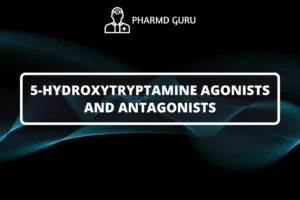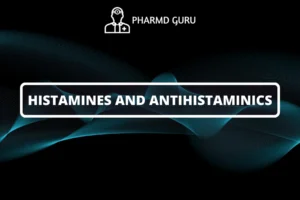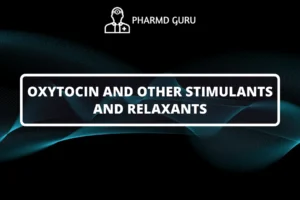Expectorants are a class of medications used to facilitate the clearance of mucus from the respiratory tract. They help to loosen and thin the mucus, making it easier to cough up and expel from the lungs. In this article, we will explore the pharmacology of expectorants, their mechanisms of action, common types of expectorants, and their role in promoting respiratory health.
SCROLL DOWN TO THE BOTTOM OF THIS PAGE FOR ACTUAL NOTES.
TABLE OF CONTENTS:
- Introduction
- Mechanisms of Action
- Types of Expectorants
- Pharmacokinetics
- Therapeutic Applications
- Considerations for Use
Introduction
Mucus plays a crucial role in the respiratory system by trapping foreign particles and helping to protect the lungs from infection. However, in certain respiratory conditions such as bronchitis and chest congestion, excessive mucus production and thickened mucus can impede proper airflow and hinder the clearing of the airways. Expectorants are used to address this issue by promoting the clearance of mucus from the respiratory tract.
Mechanisms of Action
Expectorants work through various mechanisms to help loosen and thin the mucus in the airways:
- Stimulation of Secretion: Some expectorants stimulate the secretory cells in the respiratory tract, increasing the production and secretion of thinner mucus.
- Increased Hydration: Expectorants can promote hydration of the airway surfaces, reducing the viscosity of mucus and making it easier to expel.
- Irritation of Airways: Certain expectorants may irritate the respiratory tract, leading to increased fluid secretion and enhanced clearance of mucus.
Types of Expectorants
There are different types of expectorants available, including:
- Guaifenesin: Guaifenesin is one of the most commonly used expectorants. It works by increasing the volume and reducing the viscosity of respiratory tract secretions, facilitating their removal.
- Ammonium Chloride: Ammonium chloride is an expectorant that helps to thin mucus by promoting the production of thinner secretions.
- Potassium Iodide: Potassium iodide acts as an expectorant by stimulating the bronchial glands, increasing the production of thinner mucus.
Pharmacokinetics
Expectorants are available in various formulations, including oral liquids, tablets, and capsules. They are typically administered orally, and their onset of action is usually within 30 minutes to an hour after ingestion. The duration of effect varies depending on the specific expectorant used.
Therapeutic Applications
Expectorants have therapeutic applications in respiratory conditions characterized by excessive mucus production and congestion, such as:
- Acute and Chronic Bronchitis: Expectorants can help alleviate symptoms and promote the clearance of mucus in bronchitis, reducing cough frequency and improving breathing.
- Chest Congestion: Expectorants are commonly used to relieve chest congestion associated with respiratory infections and allergies.
- Chronic Obstructive Pulmonary Disease (COPD): Expectorants may be used as part of the treatment plan for individuals with COPD to facilitate mucus clearance and improve lung function.
Considerations for Use
While expectorants are generally safe and well-tolerated, there are some considerations to keep in mind:
- Hydration: It is important to maintain adequate hydration when using expectorants to optimize their efficacy.
- Underlying Conditions: Individuals with certain medical conditions, such as asthma or kidney disease, should consult with a healthcare professional before using expectorants.
- Drug Interactions: Some expectorants may interact with other medications, so it is essential to inform healthcare providers of all concurrent medications.
ACTUAL NOTES:




